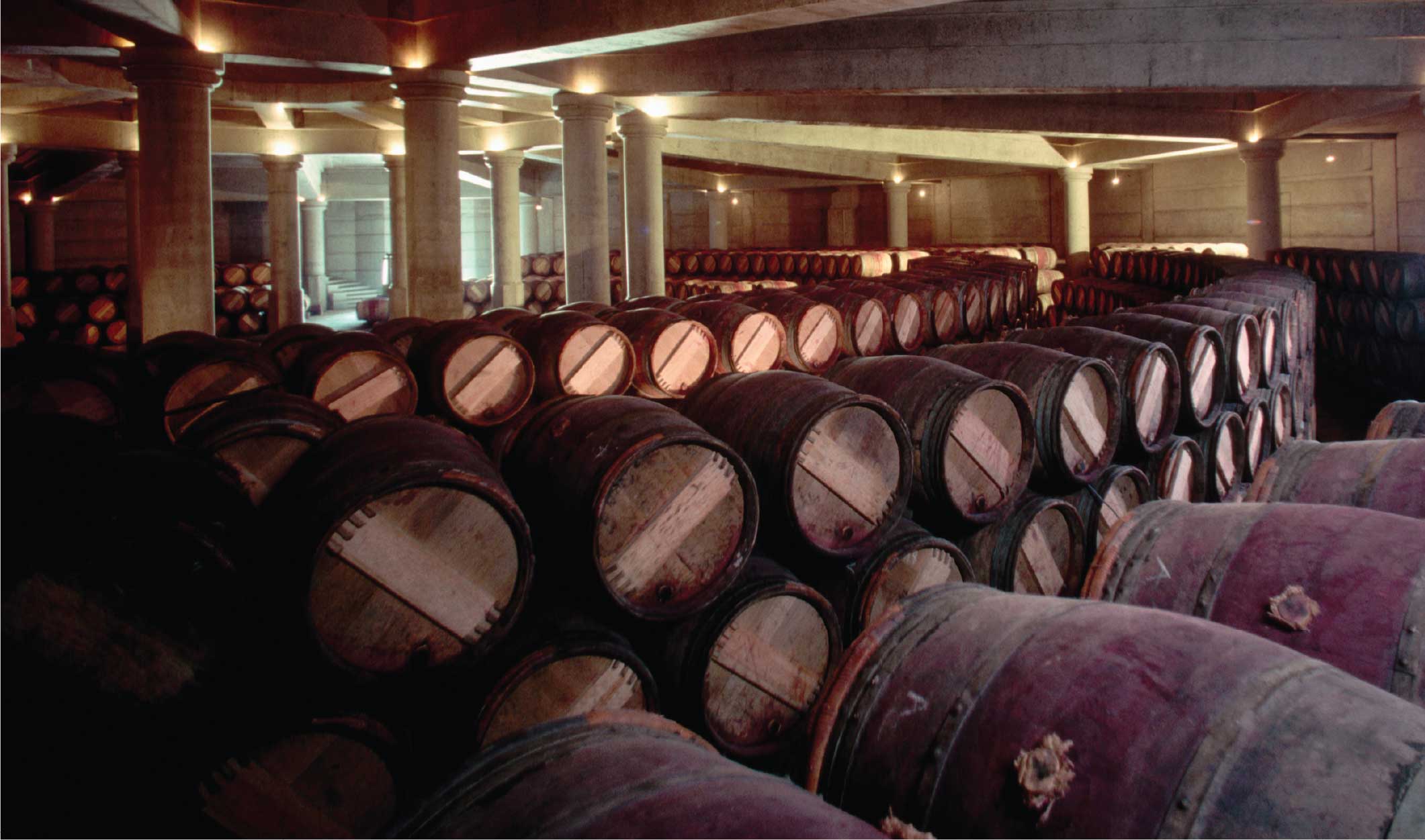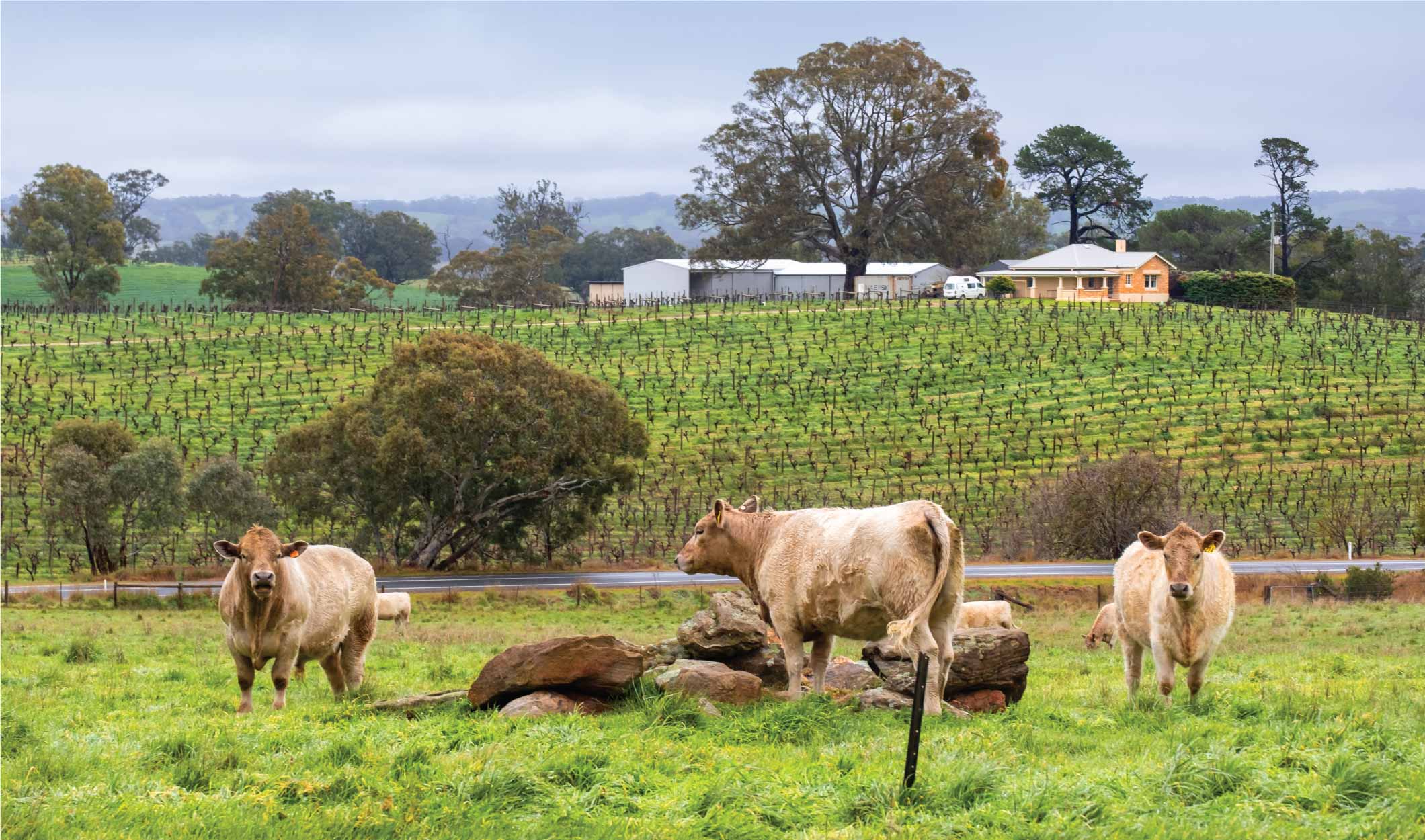Old World Meets New World

Vintages Feature Story
Born in the Old World, these popular grapes gradually took root in the New World, picking up unique nuances – and more fans – along the way.
One of the great joys of wine is exploring how the same grape can reveal exciting and nuanced differences depending on where it’s made. Many of our favourite grapes originated in Europe, and thankfully they have branched out, brought to regions around the world by immigrants looking to bring a taste of home with them or by forward-thinking pioneers who saw untapped potential and opportunity in the soils of the New World. Join us as we look at some classic grapes and styles from the Old World and showcase one New World region where each has flourished, creating new benchmarks and expressions.

Sauvignon Blanc
In France...
Though it’s believed to have originated in Bordeaux, where it still plays a prime role with Sémillon in white wines (and where its crossing with Cabernet Franc gave rise to Cabernet Sauvignon), the spiritual home of Sauvignon Blanc is the Loire. The limestone, flint and sandy soils of Touraine, one of France’s most picturesque regions, introduce fine structure and cellarability to the honeysuckle, grapefruit and cut-grass notes of these wines. Food Pairing: Rillettes de Tours; Oysters.
In New Zealand...
Sauvignon Blanc was first planted in Marlborough, New Zealand, in the 1970s. The noticeably fruitier style and more intense aromatics than their French counterparts made these unique wines immensely popular on the world stage. The expressions crafted in Marlborough redefined the style and established a new benchmark for the grape through the 1980s and ’90s. Food Pairing: Thai green curry; Grilled swordfish.

Chardonnay
In France...
Native to Burgundy, Chardonnay is planted around the globe thanks to its ability to thrive in a wide range of climates and soils. Unlike most white grapes, Chardonnay has an affinity for winemaking practices such as barrel fermentation, malolactic fermentation, lees stirring and oak fermentation and ageing, allowing winemakers great flexibility to express their own style. In Burgundy, Chardonnay creates some of the world’s most prominent white wines, and the emphasis is on evoking a true sense of place. Food Pairing: Escargots à la bourguignonne; Salmon rillettes.
In California...
Chardonnay arrived in California in the late 1880s and was first made in Napa in 1947. Napa Chardonnay typically favours ripe fruit and is most often associated with full-bodied, richly oaked wines, but the impact of cooling fogs means these Chardonnays retain a fresh, vibrant character. Food Pairing: Roast chicken; Teriyaki salmon.

Cabernet Sauvignon
In France...
Known as the King of Grapes, Cabernet Sauvignon thrives around the globe in virtually all but the coolest of wine regions. The grape first appeared in the vineyards of Bordeaux in the 17th century through the unintentional crossing of Sauvignon Blanc and Cabernet Franc. The finest expressions come from sites in gravelly soils such as those in the Haut-Médoc, of Bordeaux’s Left Bank. In fact, all but one of the châteaux designated in the 1855 classification came from this famed region. To address vintage variation, Bordeaux Cabernets may contain any percentage of Merlot, Cabernet Franc, Petit Verdot, Malbec and Carmenère. These wines are long-lived, with serious tannins and a core of blackcurrant fruit. Food Pairing: Steak with bordelaise sauce; Grilled lamb with porcini mustard.
In California...
The consistent sunny, warm conditions in California mean that vintage variation is less of a dramatic concern than it can be for Bordeaux, and so single-varietal Cabernet is more common. California Cabs are ripe, powerful, complex wines with notable cassis flavours. Food Pairing: Steak and mushrooms; Lamb burgers.

Pinot Noir
In France...
Burgundy is the global benchmark for Pinot Noir. The wines bear an almost mythical reputation for refinement and provenance and have been admired since Roman times. The grape’s ability to reflect the nuanced qualities of different growing areas was identified by monks in the Middle Ages. Though Pinot is notoriously difficult to grow, the allure of the grape has seen winemakers across the globe take on the challenge. Food Pairing: Coq au vin; Roast goose.
In New Zealand...
Around the world, Pinot Noirs share notes of raspberries, red cherries and strawberries, with earthy and brambly tones, but each site places its own definitive stamp on the wines. Those from Central Otago, New Zealand’s southernmost region, tend to be spicier and have more pronounced structure and body than their Burgundian counterparts. Though Pinot was planted in Central Otago as far back as the 1860s, it’s only been since the late 1990s and early 2000s that serious attention has been given to the grape here. Food Pairing: Honey-glazed veal; Grilled squid.

Malbec
In France…
Malbec is native to Cahors in France’s southwest, where it’s also known as Côt and Auxerrois. It was once grown across France and played a role in the blends of Bordeaux until the mid-20th century. In Cahors, Malbec is often blended with Merlot and Tannat and is famously dark, with black fruit, spice, herb and meat notes. Food Pairing: Saucisson sec de chevreuil (dried venison sausages); Grilled duck breast.
In Argentina…
French Malbecs tend to be leaner and more tannic than the rich, sumptuous versions from Argentina, where Malbec was introduced in 1853. In time, the complex ripe dark fruit, smoke and spice notes of the high-altitude wines from Mendoza saw Malbec become the country’s signature red wine. Both styles share a considerable concentration and intensity. Food Pairing: Grilled steak with chimichurri sauce; Barbecued pork.

Rhône Blends
In France…
The red wines of the Southern Rhône are primarily composed of some combination of the heat-loving Grenache, Syrah (Shiraz) and Mourvèdre (Mataro) grapes. Grenache introduces spicy red fruit, Syrah brings structure and black pepper spice, and Mourvèdre contributes tannin, earthy notes and colour. These blends are exceptionally food-friendly and approachable; qualities that have made the reds of the Southern Rhône among the most well-loved wines in the world. Food Pairing: Grilled veal chops; Mushrooms stuffed with smoked sausage.
In Australia…
The popularity of Southern Rhône blends encouraged New World winemakers to adopt the style as well, most notably in Australia , though California’s “Rhône Rangers” have enjoyed tremendous success also. In Australia, Shiraz is typically the lead grape, and the wines are more fruit-forward than their French counterparts, with earth, herbs, and oak-influenced vanilla and chocolate tones. There are sites in the Barossa with ungrafted Shiraz, Grenache and Mourvèdre that were planted in the 1850s, predating the devastation of France’s vineyards by phylloxera in the mid-19th century. New World wines, Old World spirit. Food Pairing: Grilled pork loin; Beef rissoles.

Primitivo/Zinfandel
In Italy…
In the 1990s, Primitivo and Zinfandel were shown to share identical DNA and were identified as transplants of the ancient Croatian grape Crljenak Kaštelanski (a.k.a. Tribidrag). Besides genetics, Primitivo and Zinfandel also share a robust structure and bold, spicy fruit. Sun-drenched and ocean-cooled, Puglia’s vineyards have the ideal conditions for producing ripe, concentrated wines that also have verve and balance. Primitivo has been grown here, in the “heel” of Italy, since the 1700s. The wines from here are plush, with black fruit and cherry framed by earth tones. Food Pairing: Pizza with bacon and sausage; Grilled fennel sausage.
In California…
Zinfandel is known as California’s heritage grape, and the Dry Creek Valley has plantings that date to the 1850s. Dry Creek Zinfandels are fruity and spicy with great food-friendly acidity. Younger vines produce wines that have a softer, rounder character, while old-vine examples are more concentrated and have more pronounced brambly flavours. Food Pairing: Braised short ribs; Cheese and smoky charcuterie.

Riesling
In Germany…
Riesling is an ancient German variety and mentions of the grape can be dated to 1435. It creates some of the greatest and longest-ageing of all white wines. Ranging from the bone dry to the lusciously sweet, German Rieslings have brilliant acidity, which allows them to maintain exquisite balance no matter the style. Few grapes articulate terroir so precisely, making single-vineyard expressions particularly noteworthy. Food Pairing: Hasenpfeffer (rabbit stew); Spicy grilled sausages.
In Ontario…
In Niagara, the cooling influence of Lake Ontario allows for ideal conditions for growing Riesling. Niagara’s complex and diverse soils, which include Riesling-loving limestone, are also boons to the grape. These were some of the factors that drew Herman Weiss, from the family behind Mosel’s iconic St Urbans-Hof, to Ontario, where he planted the first Riesling vines in 1976. Bright and racy, Ontario Rieslings also span the sweetness spectrum from dry to Icewine, with peach and citrus aromas and flavours being prevalent. Food Pairing: Sushi; Spicy ribs.

Syrah/Shiraz
In France…
Beloved for its deep colour, black fruit and spice, Syrah is one of the oldest grape varieties and has produced some of the world’s most exquisite and ageable wines. Crozes-Hermitage in the Northern Rhône sits at the northern limit for ripening Syrah. These wines are renowned for their elegant, peppery style and are considered to be the finest expressions of Syrah in France. The vineyards sit on steep south-facing slopes with excellent sun exposure. Food Pairing: Smoked duck breast; Grilled rabbit.
In Australia…
Syrah is grown around the world, but its home away from home is Australia, where it’s known as Shiraz. Australia’s regional diversity allows for aromatic, peppery, leanly structured versions from places such as Clare Valley, while those grown in the heat of the Barossa are robust, plush, earthy and spicy, with roasted dark fruit. Food Pairing: Grilled spareribs; Lamb chops.
Did you know?
Around the world, winemakers often label their Syrah/Shiraz to reflect their relationship to either the Rhône or Barossa styles. “Syrah” is used to describe those wines that echo the more elegant, peppery Rhône style, and “Shiraz” identifies the fruitier, fuller-bodied, more robust Australian style.
Get our Latest News!
Be the first to hear about new arrivals, special offers, virtual events and more.
Get to Know Us!
Everything we are in a nutshell.

